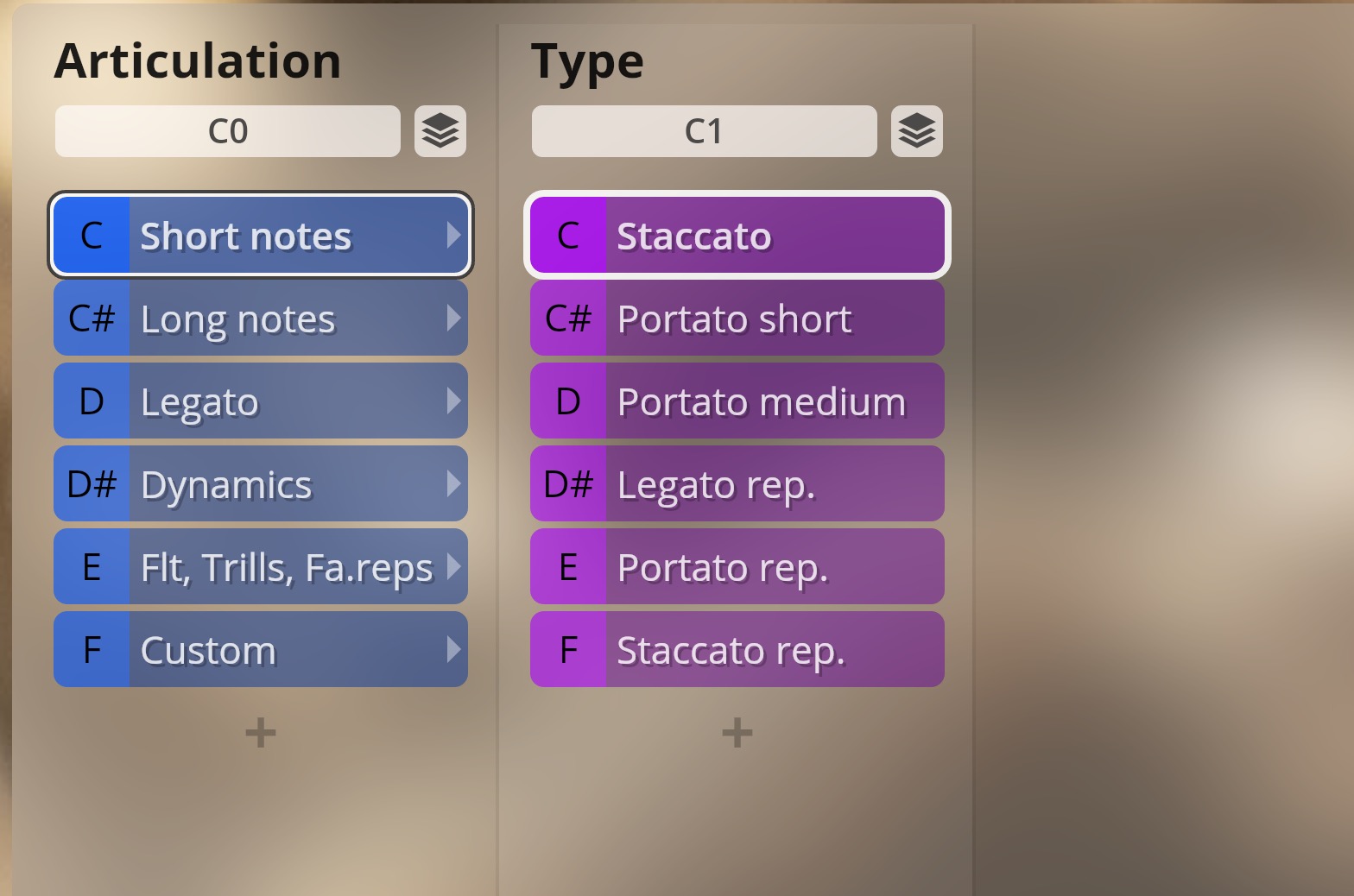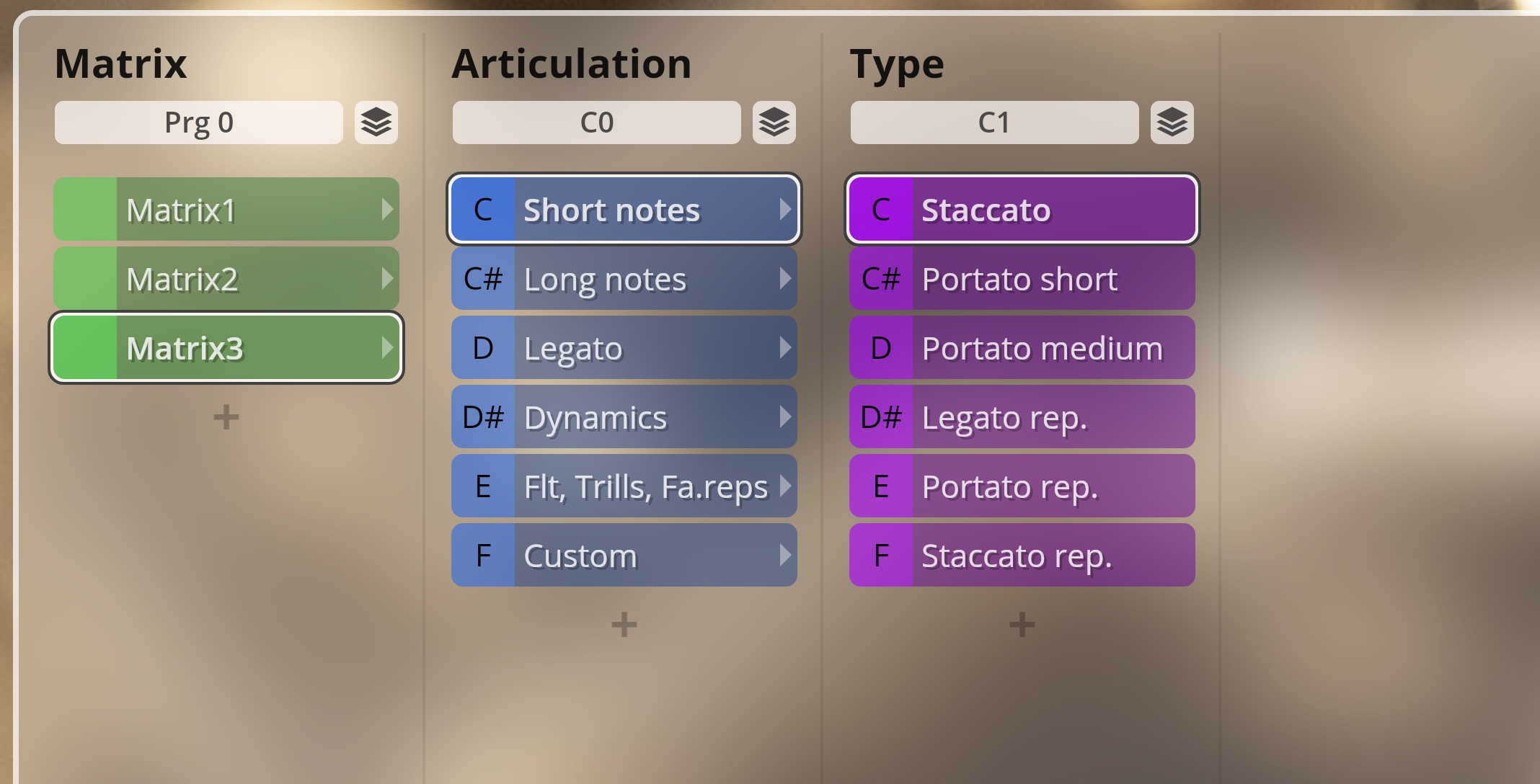@lunar_28664 said:
could you possibly give an example, Andi. I don't see anything myself.
Here is an example. I see why this is not entirely straightforward, so I will offer a production suggestion for VSL at the end.
I have attached images below, I don't know how to embed them in the post itself.
So the way you build these dimension trees is by clicking that '+' symbol, which turns the current slot into a folder and pushes the patch down a level (creating a new colum).
That's fine so far, but the problem here is that there is no way to create a matrix column ABOVE/BEFORE the Articulation column. Not easily at least.
So the way I accomplished this (compare before and after attached images below):
EDIT - simplified instructions in later post from Andi
As Andi said, Any considerations about the Mixer settings need to be planned carefully.
SUGGESTION FOR VSL
It would be nice to have a way to take a given column and '+' push a folder abvove it with new column in front it...in order to quickly add the matrix kind of behavior to an existing instrument preset. It would need to take care automatically of preserving the colors, the keyswitches, etc..and simply push them all inside a parent folder with a colum inserted in front of it to hold the new folder slot. If there is already a parent column, then create the new parent folder inside that parent dimension.



